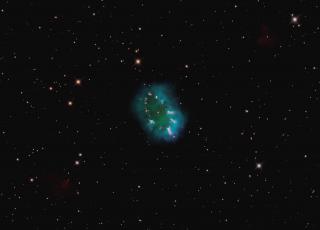Bibcode
Sowicka, P.; Handler, G.; Jones, D.
Referencia bibliográfica
Monthly Notices of the Royal Astronomical Society, Volume 479, Issue 2, p.2476-2480
Fecha de publicación:
9
2018
Número de citas
5
Número de citas referidas
4
Descripción
We report new observations of the central star of the planetary nebula
VV 47 carried out to verify earlier assertions that the short-period
pulsation modes detected in the star are driven by the
ɛ-mechanism. In our data, VV 47 was not variable up to a limit
of 0.52 mmag in the Fourier amplitude spectrum up to the Nyquist
frequency of 21.7 mHz. Given this null result we re-analysed the data
set in which oscillations were claimed. After careful data reduction,
photometry, extinction correction, and analysis with a conservative
criterion of S/N ≥ 4 in the Fourier amplitude spectrum, we found that
the star was not variable during the original observations. The
oscillations reported earlier were due to an over-optimistic detection
criterion. We conclude that VV 47 did not pulsate during any
measurements at hand; the observational detection of ɛ-driven
pulsations remains arduous.
Proyectos relacionados

Nebulosas Bipolares
Nuestro proyecto persigue tres objetivos principales: 1) Determinar las condiciones físico-químicas de las nebulosas planetarias con geometría bipolar y de las nebulosas alrededor de estrellas simbióticas. El fin es entender el origen de la bipolaridad y poner a prueba los modelos teóricos que intentan explicar la morfología y la cinemática nebular
Antonio
Mampaso Recio